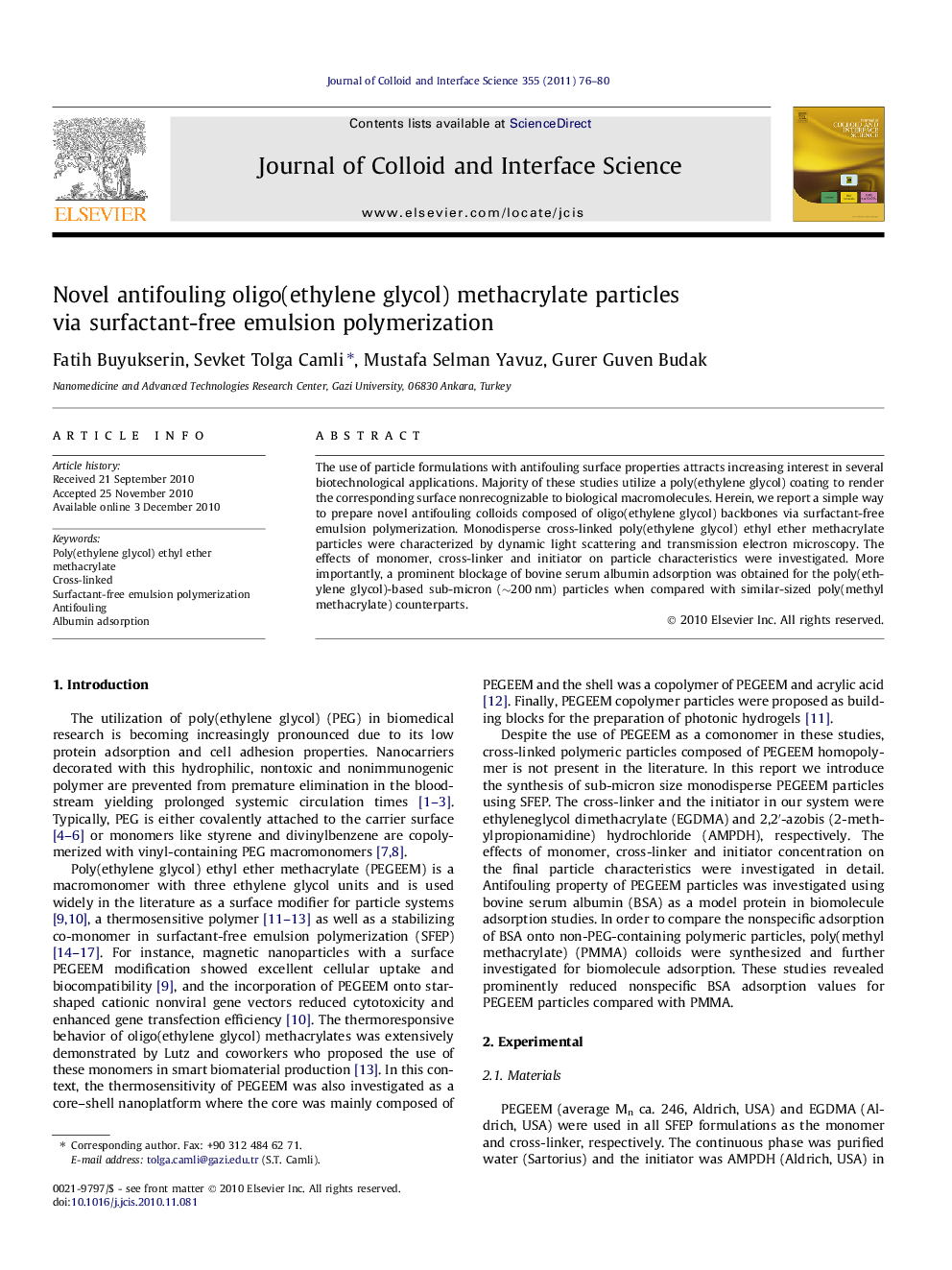| Article ID | Journal | Published Year | Pages | File Type |
|---|---|---|---|---|
| 608758 | Journal of Colloid and Interface Science | 2011 | 5 Pages |
The use of particle formulations with antifouling surface properties attracts increasing interest in several biotechnological applications. Majority of these studies utilize a poly(ethylene glycol) coating to render the corresponding surface nonrecognizable to biological macromolecules. Herein, we report a simple way to prepare novel antifouling colloids composed of oligo(ethylene glycol) backbones via surfactant-free emulsion polymerization. Monodisperse cross-linked poly(ethylene glycol) ethyl ether methacrylate particles were characterized by dynamic light scattering and transmission electron microscopy. The effects of monomer, cross-linker and initiator on particle characteristics were investigated. More importantly, a prominent blockage of bovine serum albumin adsorption was obtained for the poly(ethylene glycol)-based sub-micron (∼200 nm) particles when compared with similar-sized poly(methyl methacrylate) counterparts.
Graphical abstractCross-linked PEGEEM colloids that display novel antifouling surface properties are introduced. A simple surfactant-free emulsion polymerization is used to prepare monodisperse cross-linked particles which were characterized by DLS and TEM.Figure optionsDownload full-size imageDownload high-quality image (74 K)Download as PowerPoint slideResearch highlights► PEGEEM colloids with novel antifouling surface properties is reported for the first time. ► Surfactant-free emulsion polymerization was used to prepare monodisperse crosslinked particles. ► A prominent blockage of BSA adsorption was obtained for the PEG-based sub-micron colloids.
